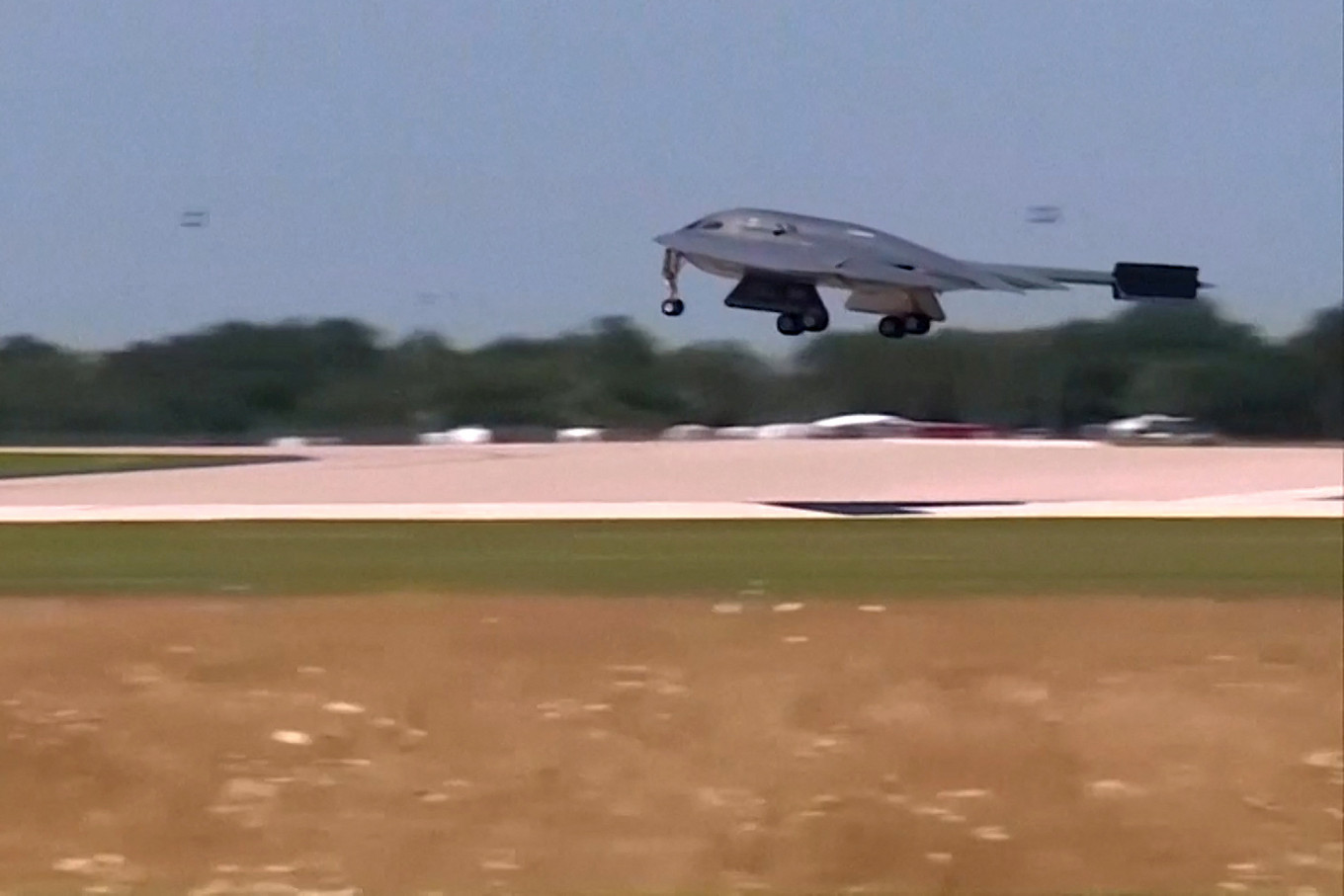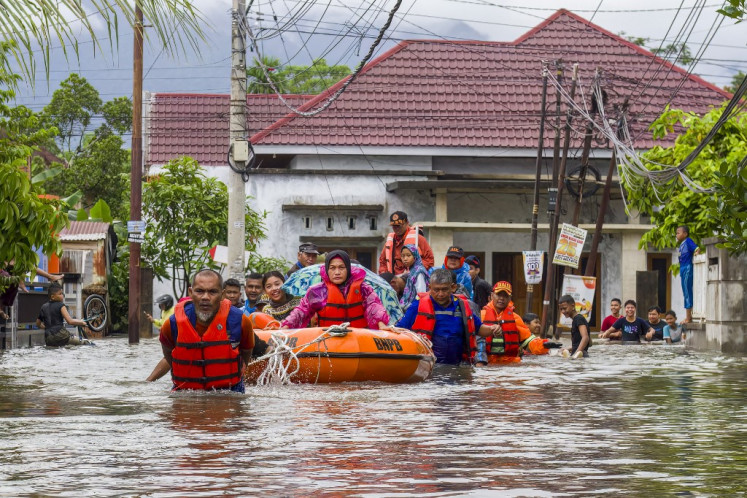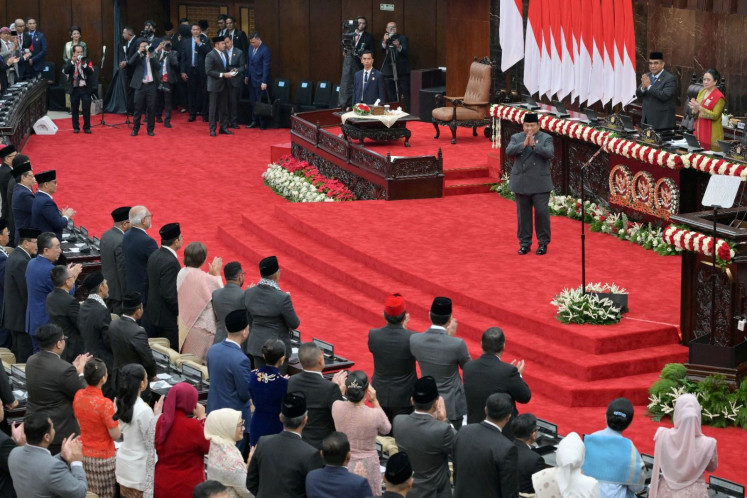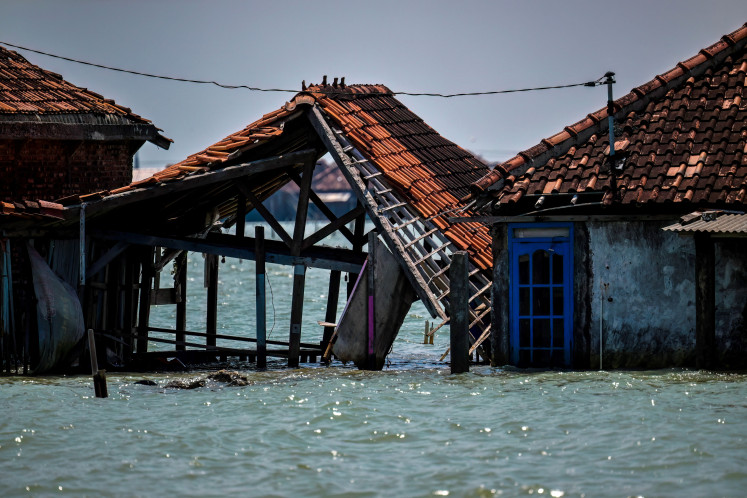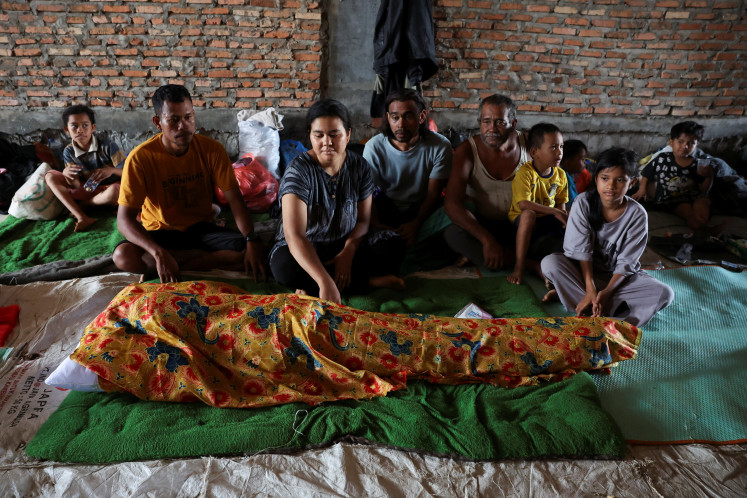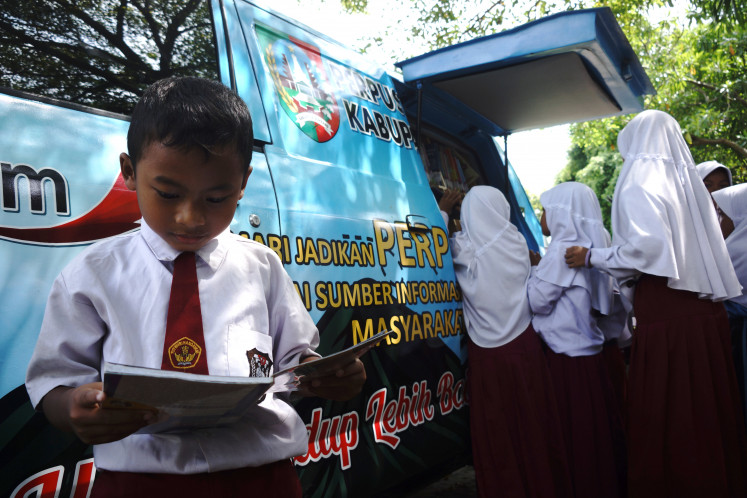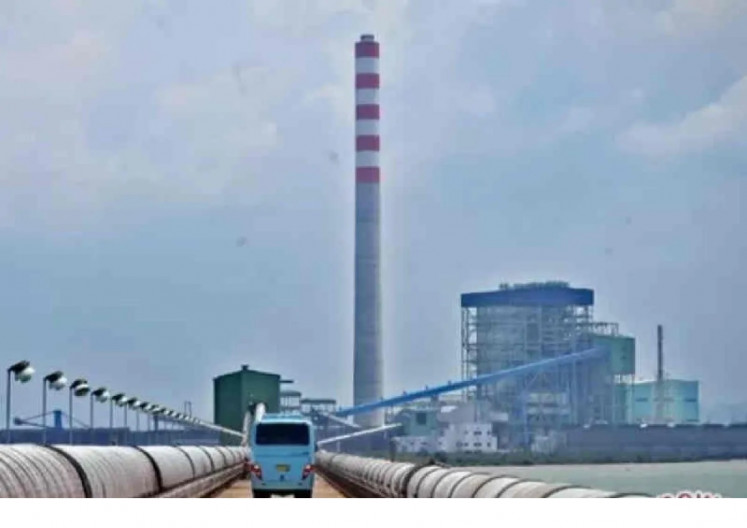Popular Reads
Top Results
Can't find what you're looking for?
View all search resultsPopular Reads
Top Results
Can't find what you're looking for?
View all search resultsWhy US strikes on Iran didn’t eliminate nuclear threat
The US strikes were too limited to eliminate Iran’s capabilities, yet provocative enough to destroy diplomatic bridges painstakingly built over the past two decades.
Change text size
Gift Premium Articles
to Anyone
O
n June 22, American B-2 bombers and Israeli long-range drones unleashed a devastating wave of precision-guided munitions onto key Iranian nuclear facilities in Fordow, Natanz and Isfahan.
The world was told the mission was a resounding success. “Completely obliterated,” said United States President Donald Trump. With his trademark bravado, he declared the strike a strategic triumph against the Islamic Republic’s clandestine nuclear capabilities.
But now, a month later, a more sobering reality has emerged. What was branded as a tactical decapitation of Iran’s nuclear program has turned out to be, at best, a temporary disruption. In fact, far from neutralizing the danger, the strikes may have intensified it.
Independent analyses, intelligence leaks and open-source satellite images have painted a far more ambiguous picture than the triumphalism emanating from Washington and Tel Aviv.
While the Fordow facility—deep beneath the Alborz Mountains—was severely damaged, the more critical sites at Natanz and Isfahan appear to have sustained only partial destruction. Iran’s highly enriched uranium stockpile was likely moved before the attacks, according to multiple reports, making the precision strikes more symbolic than substantive.
The International Atomic Energy Agency (IAEA), although alarmed by Iran’s subsequent decision to suspend cooperation, has offered no definitive confirmation that Iran’s ability to enrich uranium has been fully dismantled.
Experts warn that deep-underground centrifuge halls at Natanz remain intact, and advanced IR-6 centrifuges may still be operational. US officials now concede—though quietly—that the operation may have set back Iran’s nuclear timeline by “one to two years”, rather than the indefinite rollback originally claimed.
This strategic ambiguity presents a dangerous paradox: The strikes were too limited to eliminate Iran’s capabilities, yet provocative enough to destroy diplomatic bridges painstakingly built over the past two decades. And herein lies the peril for the region, and indeed, the world.
Iran has responded not with capitulation, but with defiance. Tehran has threatened to raise enrichment levels to 90 percent—near weapons-grade purity—if further aggression occurs.
The Supreme National Security Council of Iran has convened in near-constant session, and calls from hardliners within the regime to formally abandon Ayatollah Ali Khamenei’s 2003 fatwa against the development of nuclear weapons have grown louder.
Iran’s parliament has labeled the attacks “acts of war”, with lawmakers urging an immediate end to all cooperation with Western inspectors.
To some in the international community, this defiance is an expected nationalistic reaction to foreign aggression. But to seasoned observers of nuclear proliferation, it’s a warning shot. Military force, when divorced from a clear diplomatic endgame, can push regimes further toward weaponization—not away from it.
One of the underappreciated risks is the corrosion of the global nonproliferation regime. The strikes on Iran occurred while the country was still technically within the framework of the Nuclear Non-Proliferation Treaty (NPT), albeit with severe violations.
That precedent is worrying. If nations adhering—even loosely—to the NPT can be preemptively attacked without multilateral sanction or consensus, what incentive remains for other states to submit to international norms?
Southeast Asian nations, including Indonesia, must treat this episode as a case study in strategic miscalculation.
As the world’s largest Muslim-majority democracy and a respected member of the Non-Aligned Movement, Indonesia has long supported peaceful uses of nuclear energy while rejecting militarization. It has consistently called for Middle East denuclearization and endorsed a nuclear weapons-free zone stretching from the Gulf to the Levant.
But such normative positions require credibility, and credibility is derived from consistency. Preemptive strikes, outside the bounds of United Nations Security Council mandates, undermine that consistency.
If Iran, under intense sanctions and political pressure, chooses to cross the nuclear threshold in the coming years, it will be in large part because of the erosion of any remaining belief in Western restraint.
Already, regional powers such as Saudi Arabia, Egypt and Turkey are considering their own enrichment capabilities—not necessarily to build bombs, but to hedge against an arms race they now see as all but inevitable.
The world is entering a new nuclear age—not of disarmament, but of diffusion. And unlike the Cold War, today’s proliferation is not guided by clear ideological camps or predictable deterrence frameworks. Instead, it is shaped by technological opacity, cyber sabotage, regional grievances and transactional geopolitics.
Iran, with its long history of asymmetrical warfare and its regional influence through proxies in Lebanon, Syria, Iraq and Yemen, does not need a nuclear bomb to project power. But the perception that it might acquire one, particularly in retaliation for foreign strikes, alters the strategic calculus of both allies and adversaries.
In Southeast Asia, where maritime tensions, cyber vulnerabilities and power asymmetries already burden the security architecture, the Iran case is instructive. The lesson is not that rogue states should be appeased, but that coercive strikes without sustained diplomatic engagement are bound to backfire.
ASEAN’s own efforts at confidence-building and noninterference must now take account of the precedent set in West Asia.
For Indonesia, the implications are threefold. First, Jakarta must reinforce its support for international legal norms and multilateralism, including a reinvigorated role for the IAEA.
Second, Indonesia must call on the UN General Assembly to reassert the importance of Article 2(4) of the UN Charter, which prohibits the use of force except in self-defense or with Security Council authorization.
Third, and perhaps most urgently, Indonesia must press for a regional and global recommitment to the NPT and the establishment of nuclear-free zones as confidence-building mechanisms.
Indeed, President Prabowo Subianto should consider convening a special summit of the Non-Aligned Movement or an ASEAN–Middle East Track 1.5 Dialogue that places nonproliferation at the top of the agenda.
As a bridge-builder between the Islamic world and the Indo-Pacific, Indonesia is uniquely placed to spearhead such an initiative.
In 1962, the Cuban Missile Crisis was luckily defused not by brute force, but by clandestine diplomacy and strategic restraint. Today, in the context of the US–Iran conflict, we cannot rely on luck alone. The stakes are higher, the lines blurrier and the consequences more catastrophic.
The way forward is not through hardened bunkers and hypersonic weapons, but through verifiable trust. That means recognizing that nuclear diplomacy, though slow, flawed and often frustrating, remains the only safeguard against mutual destruction.
Southeast Asia must be ready—with principle, patience and diplomacy—to keep hopes alive.
***
The writer is a professor of ASEAN Studies and director of the Institute of Internationalization and ASEAN Studies (IINTAS) and former head teaching fellow at Harvard University. The views expressed are personal.

